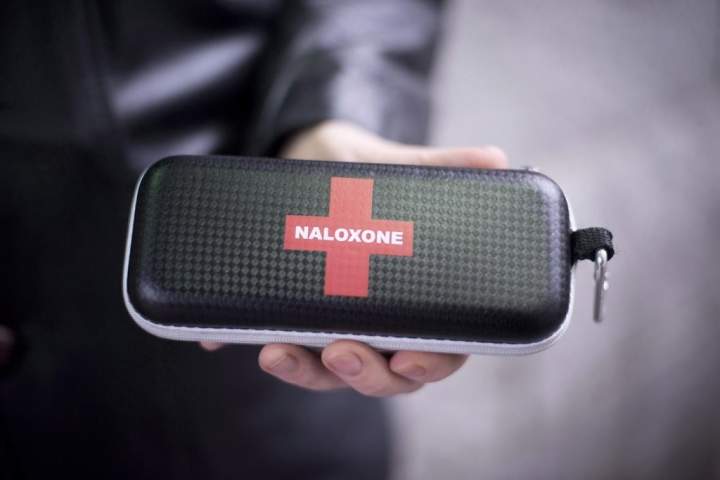Health
Saskatoon Faces Toxic Drug Overdose Crisis with 2,100 Cases in 2025

Saskatoon is grappling with a significant rise in toxic drug overdoses, reporting over 2,100 cases in 2025, nearly double the 1,200 cases recorded in 2024. Although the number of overdose fatalities has declined by 17 percent due to increased training and awareness surrounding the use of naloxone, the emergence of new drugs mixed with sedatives is complicating efforts to combat this crisis.
Challenges in Overdose Response
First responders and substance abuse professionals are facing unprecedented challenges. Rob Hogan, Deputy Chief of the Saskatoon Fire Department, stated, “We’re just barely keeping our head above water right now.” The recent spike in overdoses has raised alarms, with a notable increase observed during March 2025, prompting a concerted push to distribute take-home naloxone kits throughout the city.
“We had our big spike in March, there was a big push, and we were able to get a whole bunch of take-home naloxone kits on the street,” Hogan explained. He credited partnerships with the Saskatchewan Health Authority (SHA) and community organizations for ongoing efforts to mitigate the crisis. These initiatives have been instrumental in reducing overdose deaths, even amidst the rising number of cases.
The Impact of Drug Contamination
Despite these efforts, the situation remains dire. A recent drug alert indicated the presence of contaminants that naloxone struggles to reverse, including benzodiazepines and medetomidine, a sedative primarily used for animals. According to Jacqueline Hoffman, CEO of Prairie Sky Recovery Centre, this complicates the ability of first responders to effectively assist those experiencing overdoses. “It’s making it very, very difficult for the first responders to even anticipate what the needs are of the person who is overdosing,” Hoffman noted.
Hoffman emphasized the lack of awareness among users regarding the dangers of contaminated substances. “They don’t understand that by the time the drugs hit Saskatchewan, they have been cut so many times with so many different substances,” she explained. Many users mistakenly believe they are consuming cocaine, when in reality, the substances are often a mix of benzodiazepines, opiates, and other drugs.
Hogan reiterated the indiscriminate nature of the crisis, stating that overdoses have been reported in every neighborhood across the city. “It does affect every class of person. That’s what we call our epidemic, as well. So not just homeless people,” he said, highlighting the widespread impact of toxic drugs on the community.
As the situation evolves, both Hogan and Hoffman agree that the next steps should focus on increasing the accessibility of naloxone, enhancing educational initiatives, and expanding available resources for those impacted by substance use. Despite these strategies, they acknowledge the ongoing battle against this epidemic will remain challenging.
The city of Saskatoon continues to confront a public health crisis that necessitates urgent action and collaboration among various stakeholders. With the rising number of overdoses, the need for innovative solutions and comprehensive support systems has never been more critical.
-

 Politics1 week ago
Politics1 week agoSecwepemc First Nation Seeks Aboriginal Title Over Kamloops Area
-

 World4 months ago
World4 months agoScientists Unearth Ancient Antarctic Ice to Unlock Climate Secrets
-

 Entertainment4 months ago
Entertainment4 months agoTrump and McCormick to Announce $70 Billion Energy Investments
-

 Lifestyle4 months ago
Lifestyle4 months agoTransLink Launches Food Truck Program to Boost Revenue in Vancouver
-

 Science4 months ago
Science4 months agoFour Astronauts Return to Earth After International Space Station Mission
-

 Technology3 months ago
Technology3 months agoApple Notes Enhances Functionality with Markdown Support in macOS 26
-

 Top Stories1 month ago
Top Stories1 month agoUrgent Update: Fatal Crash on Highway 99 Claims Life of Pitt Meadows Man
-

 Sports4 months ago
Sports4 months agoSearch Underway for Missing Hunter Amid Hokkaido Bear Emergency
-

 Politics3 months ago
Politics3 months agoUkrainian Tennis Star Elina Svitolina Faces Death Threats Online
-

 Politics4 months ago
Politics4 months agoCarney Engages First Nations Leaders at Development Law Summit
-

 Technology4 months ago
Technology4 months agoFrosthaven Launches Early Access on July 31, 2025
-

 Top Stories3 weeks ago
Top Stories3 weeks agoFamily Remembers Beverley Rowbotham 25 Years After Murder





















